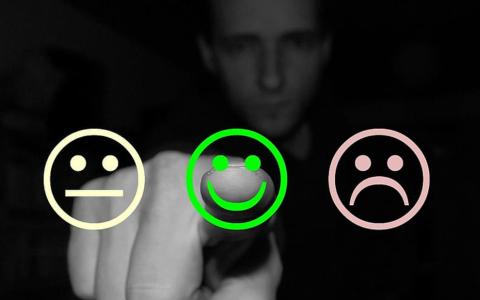
Estate planning attorneys are encountering a surprising new player in their field: emojis. Once considered the language of casual texting, these tiny icons are now influencing serious legal matters, including inheritance disputes. The question of what an emoji “really” means has become critical, and courts are paying attention.
Emojis Enter the Legal Arena
Originally designed to add emotion and nuance to written messages, emojis have moved far beyond casual conversation. Today, they are making appearances in contract disputes, fraud allegations, workplace harassment cases, and now, estate planning. A simple 👍 or ☺️ could potentially alter the course of a legal proceeding.
In estate planning, where intent often plays a pivotal role, digital communications—including text messages filled with emojis—are increasingly scrutinized as evidence. While few emoji-related inheritance cases have reached court decisions, attorneys are preparing for their growing influence in disputes over wills, trusts, and gifts.
When Emojis Mean Business
From informal chats to professional agreements, emojis now permeate a wide array of communications. In estate planning, courts are beginning to interpret their meaning in sensitive contexts, such as:
-
Will contests: Could a 📂 or 💰 in a text signify an intent to create or amend a will?
-
Trust disputes: Does a 💖 emoji in a message imply a gift or a legally binding promise?
-
Capacity claims: Could erratic or inappropriate emoji use signal diminished mental capacity?
While formal legal documents remain the gold standard, informal digital communications often surface in court, especially in disputes involving family members. These messages, emojis included, are increasingly treated as evidence.
The Challenges of Interpretation
Unlike words, emojis lack fixed meanings. Their interpretation varies by context, platform, and individual perspective. Courts now face complex questions:
-
Sender intent: Was the emoji meant to affirm, agree, or simply acknowledge?
-
Recipient perception: Would a reasonable person interpret it as binding or casual?
-
Platform discrepancies: Emojis can look different on iOS, Android, and other devices, leading to varying interpretations.
Consider this scenario: A grandmother texts her grandson, “You get it all 🎉🏡💵. Don’t tell your sister! 😜”. If she passes away without updating her formal estate documents, could this playful message impact a court’s decision? Alone, it’s unlikely to carry weight, but combined with other evidence, it might influence a will contest or trust amendment.
The Role of Experts
To untangle the nuances of emoji use, courts increasingly rely on experts such as:
-
Linguists: Analyze context and intent.
-
Digital communication specialists: Explain platform-specific differences.
-
Forensic analysts: Verify authenticity of messages.
Emojis, once dismissed as trivial, are now examined as rigorously as any written evidence in legal disputes.
Risky Business: Emojis in Professional Contexts
For estate planners, the implications are clear: emojis can clarify or confuse the meaning of written words. This is particularly significant when intent is at stake. Examples include:
-
Amending or revoking wills: A text saying, “It’s all yours 😇❤️,” might be scrutinized under relaxed rules for holographic wills in states that allow them.
-
Ambiguous gift promises: A message like “You’ll get my house 🏡👍” could spark debate over whether it was a legally binding promise or a casual sentiment.
-
Capacity disputes: Frequent or erratic emoji use might suggest diminished capacity, raising questions about the validity of an estate plan.
The informality of emojis makes them ripe for misinterpretation. A simple 😊 could soften the tone of a harsh demand, while a 🔥 might imply recklessness in certain contexts. Wealth advisors should counsel clients on the importance of clear, formal communication, particularly in matters involving significant assets or estate plans.
Best Practices for Wealth Advisors
Wealth advisors and RIAs can help clients mitigate risks by promoting careful digital communication practices. Here are key recommendations:
-
Think before you send: Encourage clients to ask, “Would I want this emoji displayed in court?” If not, avoid using it.
-
Stick to words for agreements: Emojis can support tone but should never replace clear, formal language in contracts or estate planning.
-
Know the platform: Emojis may appear differently on various devices, potentially altering their interpretation.
-
Train teams on digital etiquette: A brief workshop on professional communication, including emoji use, can prevent misunderstandings.
-
When in doubt, spell it out: Clarify intent with precise language rather than relying on symbols.
Case Examples: Emojis in Action
Here are hypothetical scenarios highlighting potential legal impacts of emoji use in estate planning:
-
Intent to Amend a Will: A client texts, “Everything is yours 🙏” but dies before updating the will. In states recognizing harmless error doctrines, this message might influence a court’s decision.
-
Ambiguous Gifting: A decedent messages a niece, “You’re getting the lake house 🏠”. Without formal documentation, this could spark a legal battle over intent.
-
Capacity Claims: Erratic emoji use in a series of texts could be cited as evidence of diminished capacity, undermining the validity of an estate plan.
The Bottom Line
As estate planning intersects with digital communication, emojis are emerging as a surprisingly significant factor in legal disputes. Wealth advisors should encourage clients to prioritize clarity and caution in all communications, particularly those involving inheritance or financial agreements.
A misplaced 😉 or 🤝 might someday become pivotal evidence. The best defense? A well-drafted, formally executed estate plan that leaves no room for interpretation. After all, while a picture might be worth a thousand words, in estate planning, it’s only worth what the court decides—and that’s rarely more than zero.



